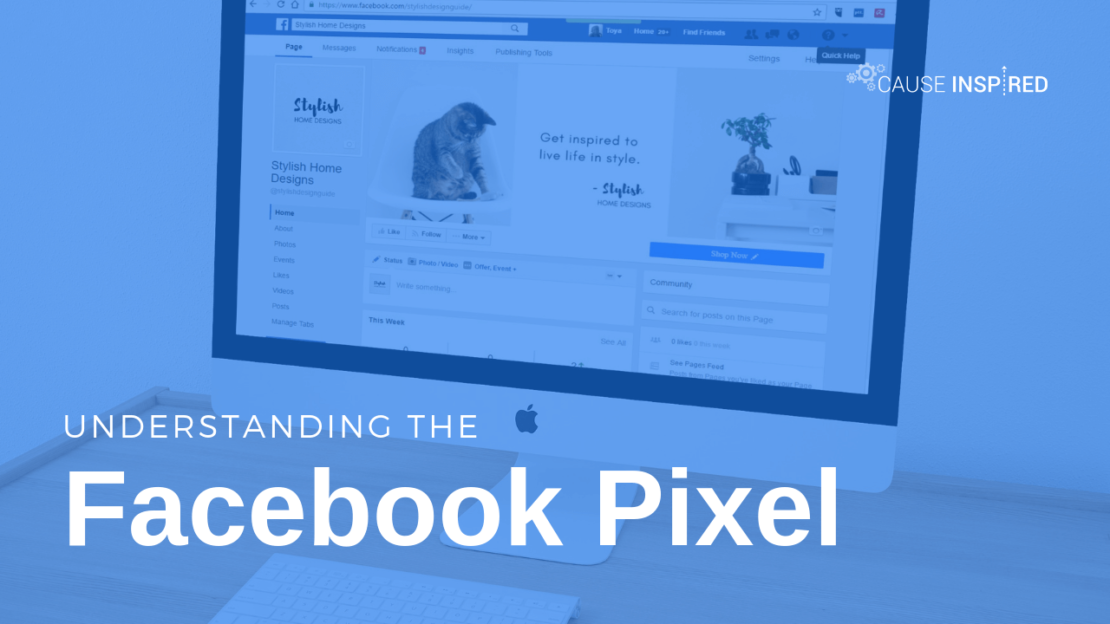Understanding The Facebook Pixel
If you are advertising on Facebook, you have likely heard of The Facebook Pixel. Although it is not required to advertise on Facebook, this piece of code allows your nonprofit to measure, optimize and build audiences for your ad campaigns.
What is The Facebook Pixel?
The Facebook Pixel is a small piece of code that you can place on your nonprofit’s website. It collects data about the actions people take when they’re on your website to help you measure the overall effectiveness of your nonprofit’s advertising campaign, and deliver your ads to the right people at the right time.
The data it collects will help you track conversions from your Facebook ad campaigns, optimize existing ads, and build highly targeted audiences for your future ads. The Facebook Pixel can even be used to remarket to people who have already taken some type of action on your site.
How does the Facebook Pixel work?
Essentially, the Facebook Pixel places and triggers cookies that track users as they interact with your website and the ads you have on Facebook. According to Facebook, when someone visits your website and takes an action (makes a donation, completes a form, etc.) the Facebook Pixel is triggered and reports this action. This allows you to know exactly when an existing or potential supporter took an action after seeing your nonprofits Facebook ad. With the Facebook Pixel, you’ll also be able to reach this individual again by creating a custom audience.
As more and more conversions take place on your website, Facebook continues to improve their ability to deliver your nonprofits ads to people who are more likely to take the desired actions. Facebook refers to this process as ‘conversion optimization.’
All data is sent and received using a privacy-safe method called ‘data hashing,’ which anonymizes information from your site before it’s matched with anonymized Facebook data, then securely deletes it.
How can the Facebook Pixel help my nonprofit?
The Facebook Pixel can provide your nonprofit important data that can be used to create better Facebook ads, and improve your targeting. Facebook tracking pixel data helps your nonprofit ensure that your ads are seen by the individuals most likely to donate or take another desired action. This allows your nonprofit to increase your Facebook ad conversion rate and ultimately improve your return on investment. Here’s a break-down of the most important ways Facebook Pixel can help your nonprofit:
- Show your ads to the right people, on the right device, at the right moment
- By understanding how people use your nonprofits website, you can discern what your website visitors are likely to do next. This helps Facebook deliver ads to the people most likely to take the action you want.
- If your nonprofit’s website is set up for purchases, the Facebook Pixel can gather data on who buys from your site, and how much they spend. This data helps optimize your ad audience based on value, meaning that Facebook will automatically show your ads to the people who are most likely to make high-value purchases.
- Build effective advertising audiences
- With Custom Audiences, you can show your ads to people based on how they’ve already interacted with your website. Using Lookalike Audiences, you can target ads to brand-new people based on their similarity to established visitors and supporters.
- Measure cross-device conversions
- See how your supporters move between devices while engaging with your content–and determine what devices they are most likely to convert from.
- Unlock additional Facebook advertising tools
- Web conversion campaigns, Custom Audiences from your website, dynamic ad delivery, and metrics such as cost per lead or cost per conversion are only available to advertisers who have installed pixel on their websites.
How do I set up the Facebook Pixel for my nonprofit?
In order to use the Facebook Pixel, you must first install the pixel code on your website. In the Pixel Tab (can be found under Measure & Report), click ‘Create a Pixel.’ Each ad account only has one pixel, so you’ll want to name it something that represents your nonprofit.
From here, you can choose how to implement the code. There are a few ways to do this depending on the website platform you use, but Cause Inspired Media recommends that our clients use Tag Manager. Once the Facebook Pixel is installed on your site, you should verify that the pixel works. There is a Google Chrome extension called “Facebook Pixel Helper” that can be used to verify that everything is set up correctly.
Once the code is installed on your website, you must select which of the seventeen standard events you’d like to track. For each event, you must choose whether to track on page load, or on inline action. An inline action refers to actions within a web page, like clicking a “donate now” button that does not open a new page.














